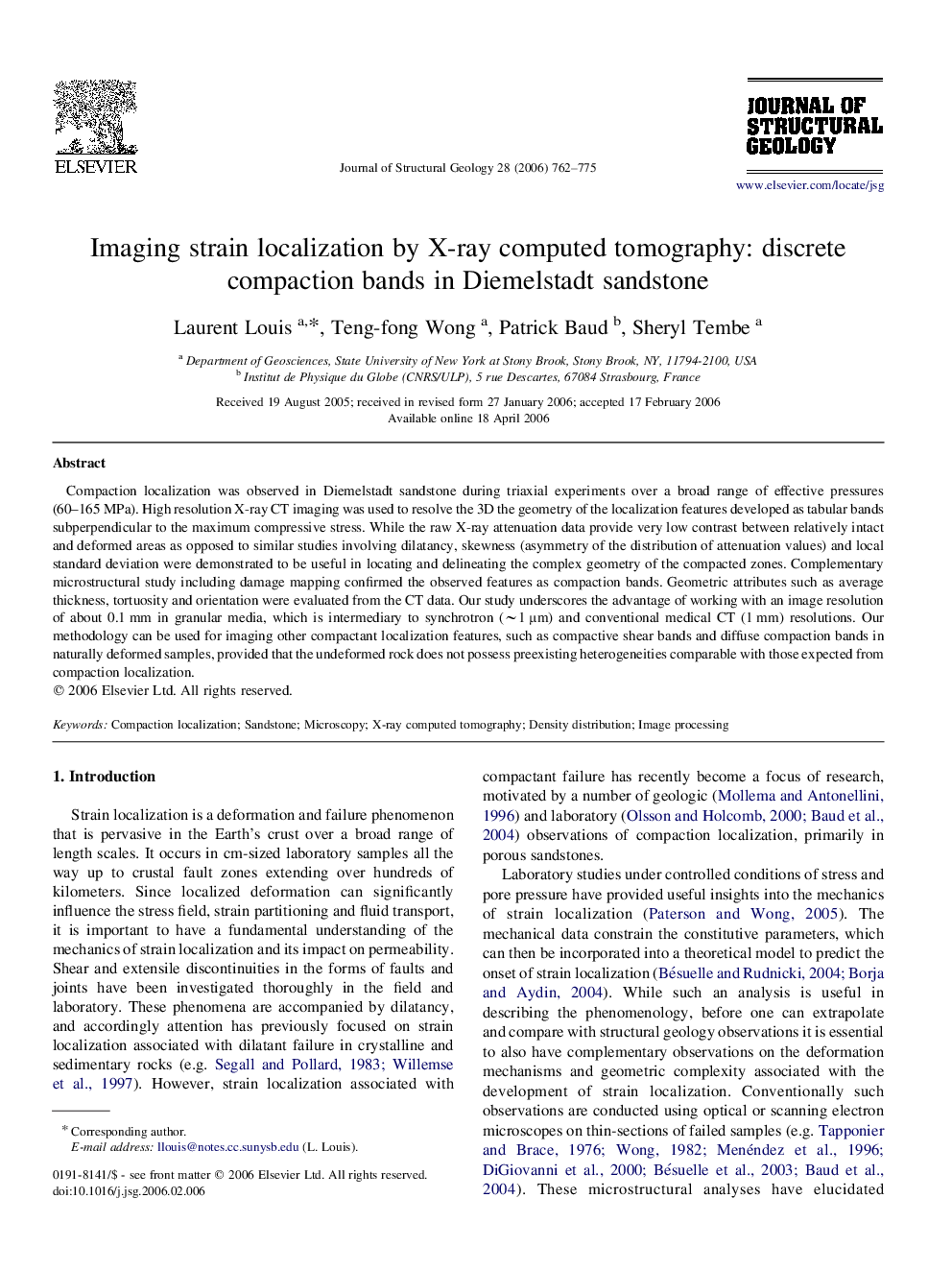| Article ID | Journal | Published Year | Pages | File Type |
|---|---|---|---|---|
| 4734235 | Journal of Structural Geology | 2006 | 14 Pages |
Compaction localization was observed in Diemelstadt sandstone during triaxial experiments over a broad range of effective pressures (60–165 MPa). High resolution X-ray CT imaging was used to resolve the 3D the geometry of the localization features developed as tabular bands subperpendicular to the maximum compressive stress. While the raw X-ray attenuation data provide very low contrast between relatively intact and deformed areas as opposed to similar studies involving dilatancy, skewness (asymmetry of the distribution of attenuation values) and local standard deviation were demonstrated to be useful in locating and delineating the complex geometry of the compacted zones. Complementary microstructural study including damage mapping confirmed the observed features as compaction bands. Geometric attributes such as average thickness, tortuosity and orientation were evaluated from the CT data. Our study underscores the advantage of working with an image resolution of about 0.1 mm in granular media, which is intermediary to synchrotron (∼1 μm) and conventional medical CT (1 mm) resolutions. Our methodology can be used for imaging other compactant localization features, such as compactive shear bands and diffuse compaction bands in naturally deformed samples, provided that the undeformed rock does not possess preexisting heterogeneities comparable with those expected from compaction localization.
